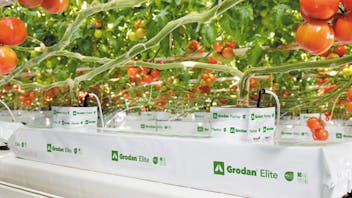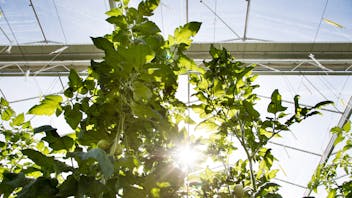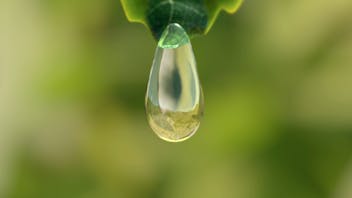Botrytis cinerea grows most rapidly under the conditions of high humidity (RH>85%) and at temperatures of 15-20oC. In general, crops in shelters are at risk throughout the production period, but for many reasons it is on the 25th of July that a period starts when diseases and infections tend to develop. The pathogen described is distinguished by its high variability, for example enabling it to rapidly develop resistance to available fungicides in use.*
Above all, prevention of grey mould in greenhouse crops requires:
- An active climate to be maintained, including humidity and air temperature, forced air movement and ventilation in the facility, as well as condensation prevention;
- Meticulous care of plants (to minimise mechanical damage to plants) and carrying out care work, such as leaf cutting under favourable climate conditions indoors, as well as spotting and eliminating infected plants;
- An appropriate irrigation strategy to keep the root system and plants in good condition, making them generative;
- Adequate fertilisation (especially using Ca, K, Si);
- The use of microbial fungicides;
- The use of chemical plant protection products in the event of intensifying disease symptoms.
Principles of autumn crop irrigation to reduce the incidence and development of grey mould
- Irrigation START based on plant activity ↓WC as from sunrise 1.5 - 2%
- Irrigation STOP ↓WC until sunset amounting to a minimum of 3%
- Daily decrease ΔWC in the humidity of the substrate of at least 8% in August
- As from September more than 10%
- WC of the substrate: for tomatoes 60% during the day and 50% at night; for cucumbers: 65%;
- EC of the substrate at a stable level
- June / August between 4.0 – 4.5 mS; after plant head cutting – 5.0 – 5.5 mS ECslab- Ecgift = 1.0 or 1.5 mS/cm

An irrigation strategy can affect the reduction of grey mould of crops. As of the end of July, special attention should be paid to irrigation starting and ending times which determine the night drop in the water content. In autumn, night irrigation is an occasional necessity, e.g. due to special weather conditions.










